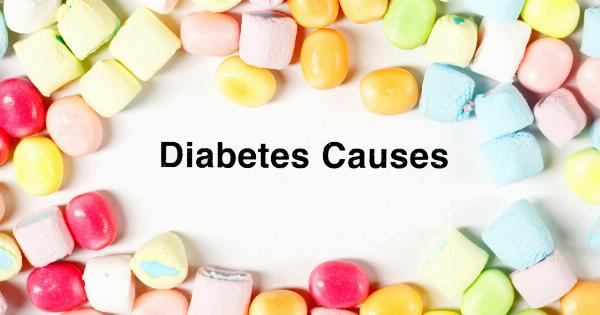Bulimia nervosa, commonly known as bulimia, is a serious eating disorder characterized by recurrent episodes of binge eating followed by compensatory behaviors like purging, excessive exercising, or fasting.
It is often considered a hidden disorder due to its secretive nature, making it difficult for loved ones to detect. Bulimia can have severe physical, emotional, and psychological consequences if left untreated. Understanding the signs, causes, and treatment options for bulimia is crucial in supporting individuals struggling with this sneaky disorder.
The Signs of Bulimia
Bulimia is not always easy to recognize, as individuals with this disorder are often skilled at hiding their behaviors. However, there are several signs and symptoms that may indicate a person is struggling with bulimia:.
- Frequent episodes of binge eating: This involves consuming large amounts of food in a short period, feeling out of control during the episode.
- Purging behaviors: The most common methods include self-induced vomiting, misuse of laxatives or diuretics, and excessive exercising.
- Evidence of purging: Frequent trips to the bathroom after meals, presence of laxatives or diuretics, or signs of vomiting (such as swollen cheeks or calluses on the knuckles).
- Preoccupation with body shape and weight: Constantly obsessing over weight, body image, and fear of gaining weight.
- Skipping meals or fasting: Restricting food intake for extended periods, often followed by a binge-purge cycle.
- Mood swings and changes in behavior: Increased irritability, anxiety, depression, and decreased social interactions.
- Physical symptoms: Frequent fluctuations in weight, dental problems, swollen salivary glands, and gastrointestinal issues.
- Distorted body image: Seeing oneself as overweight, even when significantly underweight.
- Excessive focus on food and eating: Constantly thinking or talking about food, collecting recipes, or cooking for others without eating.
- Secrecy and hiding behaviors: Going to great lengths to hide food, wrappers, or evidence of purging.
Causes and Risk Factors
The causes of bulimia are complex and can vary from person to person. Several factors may contribute to the development of this eating disorder:.
- Genetics: Individuals with a close family member who has an eating disorder are more likely to develop bulimia themselves.
- Psychological Factors: Low self-esteem, perfectionism, body dissatisfaction, and a history of trauma or abuse can increase the risk.
- Sociocultural Influences: Societal pressure to attain a certain body shape, unrealistic beauty standards portrayed in media, and cultural emphasis on thinness play a significant role.
- Biological Factors: Certain hormonal imbalances or abnormalities in brain chemicals may contribute to the development of bulimia.
- Environmental Factors: Participating in activities that focus on weight loss, such as competitive sports or dancing, can increase the risk. Additionally, frequent dieting or having a history of being overweight can contribute to the development of the disorder.
The Dangers of Bulimia
Bulimia can have severe physical, emotional, and psychological consequences if left untreated. Some of the dangers associated with this eating disorder include:.
- Electrolyte imbalances: Frequent vomiting or excessive use of diuretics can lead to dehydration and disrupt the balance of important electrolytes in the body, which can be life-threatening.
- Malnutrition: Bingeing and purging interfere with the body’s ability to absorb essential nutrients, leading to malnutrition and deficiencies in vitamins and minerals.
- Damage to the digestive system: The frequent intake of large amounts of food followed by purging can cause damage to the esophagus, stomach, and intestines.
- Cardiovascular problems: Electrolyte imbalances and rapid weight fluctuations put a strain on the heart, potentially leading to arrhythmias, heart failure, or even cardiac arrest.
- Dental issues: Frequent vomiting exposes teeth to stomach acid, eroding tooth enamel and increasing the risk of cavities, gum disease, and tooth loss.
- Mental health disorders: Bulimia is often accompanied by other mental health conditions, such as depression, anxiety disorders, self-harm, or substance abuse.
- Social isolation: The secretive nature of bulimia can cause individuals to withdraw from social activities and relationships, leading to feelings of loneliness and isolation.
- Decreased quality of life: The physical and emotional toll of bulimia can significantly impair daily functioning, impacting relationships, work, and overall well-being.
Treatment Options for Bulimia
Effective treatment for bulimia usually involves a combination of therapy, nutritional counseling, and medical support. Some of the commonly used treatment options include:.
- Cognitive-Behavioral Therapy (CBT): CBT focuses on identifying and changing negative thought patterns and behaviors related to food, body image, and self-esteem. It helps individuals develop healthier coping mechanisms and strategies to manage triggers and cravings.
- Interpersonal Therapy (IPT): IPT focuses on improving interpersonal and social functioning. The therapy helps individuals explore and address relationship issues that may contribute to the development of bulimia.
- Family-Based Therapy (FBT): FBT involves the active participation of the family in the recovery process. It focuses on restoring healthy eating patterns, improving communication, and providing support to the individual with bulimia.
- Medical Support: A medical team consisting of physicians, dietitians, and psychiatrists is essential to monitor physical health, manage complications, and ensure overall well-being.
- Support Groups and Peer Support: Joining support groups or seeking peer support can be immensely beneficial. Connecting with others who have similar experiences can provide validation, encouragement, and guidance during the recovery process.
- Nutritional Counseling: Working with a registered dietitian who specializes in eating disorders can help individuals establish a balanced relationship with food and develop sustainable eating habits.
- Medication: In some cases, medication such as selective serotonin reuptake inhibitors (SSRIs) may be prescribed to help manage underlying issues like depression or anxiety.
Supporting a Loved One with Bulimia
If you suspect that a loved one is struggling with bulimia, it’s essential to approach them with empathy and understanding. Here are some tips on how to support someone with bulimia:.
- Educate yourself: Learn about bulimia and its effects. Understand the emotional and physical challenges your loved one may be facing.
- Stay non-judgmental: Create a safe and non-judgmental environment that encourages open conversations about their struggles and feelings.
- Offer support: Let your loved one know that you are there for them and that you are willing to support them during their recovery journey.
- Encourage professional help: Suggest seeking professional help from doctors, therapists, or support groups specifically experienced in treating eating disorders.
- Be patient: Recovery takes time, and setbacks may occur. Be patient, understanding, and avoid placing pressure on your loved one.
- Encourage self-care: Promote activities that promote self-care and self-esteem, such as engaging in hobbies or pursuing interests outside of the eating disorder.
- Avoid focusing on appearance: Refrain from commenting on weight, size, or appearance, as it may exacerbate the individual’s negative body image.
Conclusion
Bulimia is a sneaky disorder that often goes unnoticed due to the secretive behaviors associated with it. Understanding the signs and symptoms of bulimia is crucial in identifying individuals who may be struggling.
The causes of bulimia are multifactorial and can involve genetic, psychological, sociocultural, biological, and environmental factors. If left untreated, bulimia can have severe physical, emotional, and psychological consequences. However, with appropriate treatment, individuals can recover from bulimia and regain a healthy relationship with food and their bodies.
Support from loved ones, professional help, and a comprehensive treatment plan are essential components in overcoming this sneaky disorder.



























